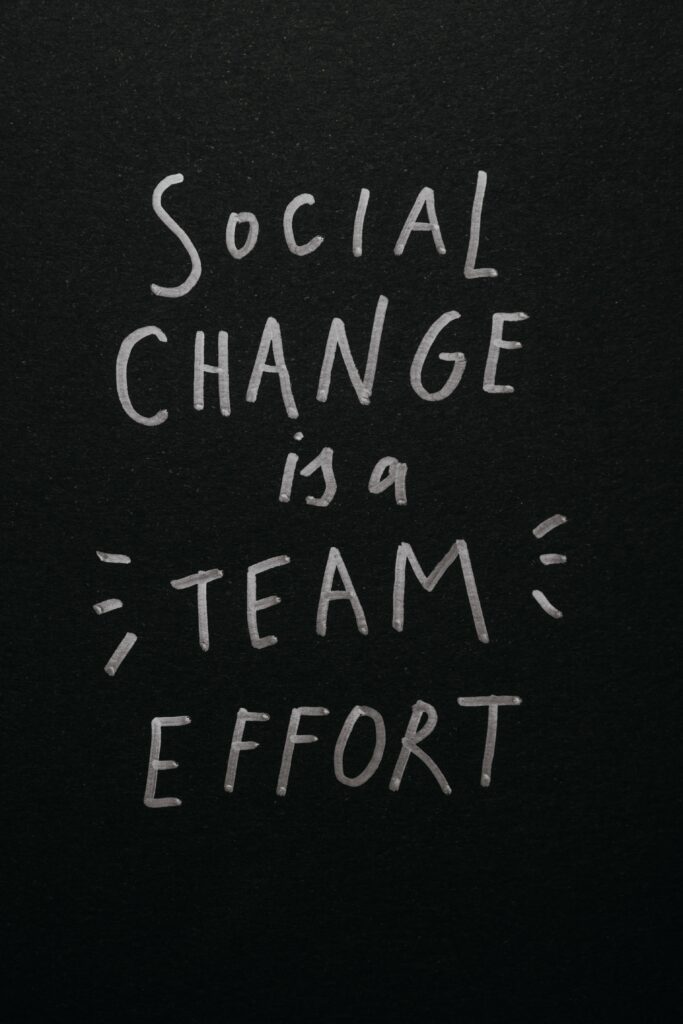Investing with a purpose is becoming increasingly popular. Impact investing does just that, and it’s gaining traction with investors who want to make money while making the world a better place. By aligning their investments with social and environmental goals, investors can contribute meaningfully to causes they care about while still reaping financial rewards.
Importance of Impact Investing in Today’s Society
By investing in businesses that are tackling climate change, social justice, and other global issues, investors can help create real change while also growing their wealth. It’s a powerful way to make a lasting contribution to causes you care about. On top of this, the potential for impact investing to drive innovation and economic growth is huge. By channeling investment towards companies tackling global issues, investors can help create new markets and jobs that could fuel the economy in the future.
Understanding Impact Investing

Impact investing is revolutionizing the way people think about their money. By investing with intentionality, additionality, measurement, and accountability, investors can create positive change in society and the environment while still earning a financial return. Whether looking to support causes close to your heart or just interested in earning a profit from a socially responsible investment portfolio, impact investing is a powerful tool for making positive change.
Intentionality, additionality, measurement, and accountability are the pillars of impact investing. Intentionality refers to making investments with the intention of creating a positive social or environmental change. Additionality means that the investment should lead to an outcome that would not have occurred without it. Measurement involves tracking and reporting on social and environmental outcomes over time. And accountability ensures that the investment is contributing to the intended impacts.
Examples of Impact Investments + Their Impact on Society and the Environment
Examples of impact investments include:
- Renewable energy
- Affordable housing
- Sustainable agriculture
- Education
These investments can have meaningful impacts on society and the environment by reducing carbon emissions, providing access to affordable housing, promoting sustainable farming practices, and improving educational outcomes.
For instance, an impact investor may invest in a solar energy company that provides renewable energy to underserved communities. This investment not only generates financial returns but also has a positive impact on the environment by reducing greenhouse gas emissions and improving air quality, as well as a social impact by providing access to energy for those who otherwise may not have it.
The Growth and Potential of Impact Investing
Impact investing is a growing trend, with the Global Impact Investing Network estimating that the impact investing market will exceed 1 trillion in 2022. More and more investors are choosing to align their investments with their values and create positive social and environmental change.
There are various ways to participate in impact investing, including individual investments, impact funds, and community investing. By committing capital to organizations that prioritize positive social and environmental outcomes, investors can not only generate financial returns but also play an active role in creating a better world.
Identifying Impact Investment Opportunities
When it comes to impact investing, it’s essential to focus on the causes that you care most about. Once you have identified which issues you want to address with your investments, you can research the various options available and select investments that align with your goals. Here are some tips for identifying impact investment opportunities:
Social and Environmental Issues to Consider

Consider the social and environmental issues that matter the most to you. Are you passionate about climate change, education, poverty, or gender equality? Once you have identified your key values, you can begin to research the investment opportunities that align with these values.
Types of Impact Investments
There are many different types of impact investments, each with its own focus and goals. Here are a few examples:
- Community investing: Investing in affordable housing, community development projects, and small businesses in underserved communities.
- Sustainable agriculture and food systems: Investing in sustainable agriculture, organic farming, and food-related businesses.
- Renewable energy: Investing in wind, solar, and other renewable energy projects.
- Microfinance: Invest in microfinance institutions that provide small loans to low-income individuals and entrepreneurs.
- Education and training: Investing in education and training programs that help individuals acquire new skills and increase their earning potential.
- Healthcare: Investing in healthcare infrastructure, medical research, and access to healthcare for underserved populations.
Researching and Evaluating Impact Investments
Before making an impact investment, it’s important to research and evaluate the opportunity fully. Ensure that the investment has a clear social or environmental impact, a solid track record of success, and a plan for measuring and reporting results. Don’t forget to thoroughly understand the risks as well – just like traditional investments, there is always a chance that an impact investment may not generate the returns you hope for.
Maximizing Returns with Impact Investing
Balancing Financial Returns and Social/Environmental Impact
Impact investing strives to combine financial returns with positive social and environmental impact. The key to successful impact investing is finding a balance between these two goals. Setting clear investment criteria that consider both financial and impact metrics, as well as understanding one’s risk tolerance and investment horizon, is critical for achieving this balance.
Measuring Impact and Financial Performance
Measuring the impact of impact investments is a critical part of evaluating the success of an investment strategy. Consider tracking both social and environmental indicators, such as:
- Job creation
- Carbon emissions reduction
- Access to education
Also, track financial performance metrics like:
- Return on investment
- Internal rate of return
- Cash flow
Impact investment strategies to consider
There are several impact investment strategies that investors can consider, including:
- Direct investments in socially responsible businesses or projects
- Investing in impact-focused mutual funds or exchange-traded funds (ETFs)
- Supporting impact-focused organizations through philanthropic investments or donations
- Utilizing socially responsible robo-advisors or financial advisors who specialize in impact investing
Ultimately, the most effective impact investment strategy varies from investor to investor, depending on their financial goals and values.
Impact Investing and Risk Management

Identifying and Managing Risks
Impact investing carries potential risks that should be identified and managed before making an investment. Regular due diligence is key, which means taking a close look at the underlying business models, market conditions, and impact investment strategy. By researching and consulting with experts in this field, you can ensure your investments are ethically-sound and financially rewarding.
Strategies for Mitigating Risks in Impact Investing
Managing risks associated with impact investing is key to achieving long-term financial and social returns. To mitigate potential risks, investors can diversify investments across different impact sectors, geographies, and investment types. Risk management tools such as insurance, guarantees, and hedging strategies can also be used to reduce risk exposure. Lastly, ongoing monitoring and evaluation of impact investments help ensure that any risks are identified and managed effectively, helping investors achieve their financial and impact goals in the long run.
Tax Benefits of Impact Investing
Tax credits for Investing in Low-Income Communities
The New Markets Tax Credit (NMTC) program offers investors in low-income areas a unique opportunity to receive tax credits for their investments. Through the NMTC program, investors can receive a 39% tax credit over the course of seven years on qualified investments in designated Community Development Entities (CDEs). These CDEs use the capital to finance businesses and projects that benefit low-income communities, such as affordable housing, community facilities, and small business development. To participate in the NMTC program, investors must submit a competitive application and work with approved CDEs.
Tax deductions for investing in renewable energy

Impact investors looking to invest in renewable energy projects may be eligible for federal tax deductions through the Investment Tax Credit (ITC) and Production Tax Credit (PTC) programs. The ITC provides a credit of up to 26% of the total investment cost for solar, wind, and other renewable energy projects. At the same time, the PTC offers a per-kilowatt-hour credit for electricity generated from renewable sources. These tax incentives can reduce the cost of investing in renewable energy projects and make them more appealing to impact investors.
Impact Investing and Retirement Accounts
Overview of Self-Directed Retirement Accounts (SDRAs)
Self-Directed Retirement Accounts (SDRA) are a unique investment option that provides investors with the flexibility to invest in alternative assets, including impact investments. With an SDRA, such as a Solo 401k or self-directed IRA, investors have the ability to invest their retirement funds beyond stocks, bonds, and mutual funds. Investors can use SDRA funds to invest in various impact opportunities, including:
- Community development projects
- Renewable energy ventures
- Affordable housing initiatives
Investors can use their SDRA to invest in single projects, pooled funds, or crowdfunding platforms.
Conclusion
Impact investing is a growing trend that offers investors the potential for high returns and tax benefits while allowing them to align their values with their investment strategies. For those interested in impact investing, signing up for a Solo 401k with a provider like solo401k.com is an ideal option. With a self-directed retirement account, investors have more control over their investments and can diversify their portfolios by investing in different assets, including impact opportunities. This provides the opportunity to make a difference while still achieving their long-term financial goals.





